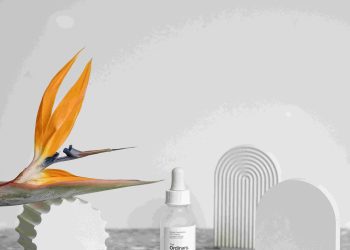Flawless Design Solutions for Businesses
What separates a good design from a flawless one?
In today’s hyper-competitive business landscape, the answer lies in not only aesthetics but also functionality, strategic thinking, and adaptability to the ever-changing environment. These solutions aren’t just the icing on the cake but the foundational bedrock for long-term enterprise success. Let’s explore the methodologies to bridge the gap and redefine how businesses approach design.
From Personal Insight to Global Conversation
A few years ago, my team and I launched a company grappling with a complicated product lineup and a scattered brand identity. We realized traditional design ideologies were inadequate. It wasn’t enough to design appealing logos or websites; we had to delve deeper—solving problems, aligning emotions, and predicting users’ needs.
Through this lens, we identified larger trends. Businesses across industries faced similar dilemmas: disconnected systems, unclear consumer communication, and overburdened interfaces. Upon recognizing this flaw, we committed ourselves to challenge the orthodox and offer a solution—a strategy rooted at the intersection of psychology, technology, and philosophy.
Breaking Away from Conventional Thought
Traditional wisdom states that design is merely about what meets the eye. However, this shortsighted perspective limits growth opportunities. Flawless designs are invisible; they ensure smooth functionality without the user realizing the elaborate thinking behind their simplicity. For instance, Apple revolutionized the digital age by merging functionality with elegance, where users focus on ‘why’ instead of ‘how.’
We need to challenge assumptions. Is minimalism always the answer? Are bold colors really the most effective in gaining attention? By daring to question, business leaders expose new pathways where design forms symbiotic relationships with goals and passion.
The Crossroads: Psychology Meets Business
The neuroscientific studies of cognitive biases and user psychology uncover insights regarding decision-making processes. For example, businesses adopting a user-centered approach directly benefit from understanding how consumers behave. Harvard researchers discovered that when people feel an emotional connection to brands, loyalty increases exponentially.
Yet flawless design transcends psychology alone; it demands professionalism. Companies like Amazon combine cutting-edge AI systems with streamlined customer interactions, removing inefficiencies in the buyer journey. The interplay of diverse disciplines thus spurs innovation.
Looking Forward: Designing the Future Landscape
The next era of business trends relies heavily on predictive analytics. Companies must prepare for designs that adapt as trends emerge. Remote work technologies combined with AR/VR could define workspace designs. Similarly, blockchain-powered transparency might develop new consumer trust levels in product supply chains.
We’re moving towards an era of continuous problem-solving, where businesses must evolve their design strategies as attractively as they maintain their financial strategies. As workplaces shift, user behaviors adapt, and generational structures diversify, businesses must be ready.
Practical Tips for Businesses
- Conduct a deep analysis of consumer requirements before any design initiative.
- Prioritize functionality while minimizing cognitive load on the end-user.
- Think multi-dimensionally: merge storytelling with technical advancements.
- Encourage collaborations between teams from varied fields to stimulate innovation.
- Continuously educate yourself and your workforce. Consider ongoing workshops focusing on design and technology integration.
Frequently Asked Questions
Q1: What makes a design solution flawless?
A flawless design seamlessly integrates purpose, functionality, adaptability, and aesthetics. It addresses potential user pain points before they arise while providing a gratifying experience.
Q2: How can I incorporate innovative design in my small business?
Start small by researching your customer base, then employ tools such as wireframes and prototypes to test ideas. Collaborate with designers skilled in user psychology to craft solutions that resonate.
Q3: What role does sustainability play in flawless design solutions?
Sustainability ensures designs don’t just appeal today but for years to come. Using eco-friendly materials, promoting circular economies, and reducing environmental footprints are integral.
Conclusion: Designing the Circular Narrative
Businesses thrive not merely by offering products but by creating seamless interactions. By applying multidisciplinary thinking combined with purpose-driven storytelling and advancing technologies, companies can design solutions transcending time limits. Yet every success remains incomplete without the drive to learn, reflect, and act upon evolving challenges.
The world is waiting for audacious leaders willing to question, innovate, and educate continuously. Are you ready to design your next chapter flawlessly?






















